See Part I of the Salsa Warbird Review Here.
2016 Salsa Warbird Review Part II
The 2016 Salsa Warbird is categorized on the Salsa website as a: GRAVEL RACING / FIREROAD RIDING / ROAD RIDING bicycle. Link to Manufacturer’s Website
The bike comes in three distinct flavors: a Carbon framed Warbird with SRAM Rival, an aluminum frame/carbon fork Warbird with Shimano 105, and a Tiagra version with the same frame/fork as the 105.
The Warbird on review here is the Tiagra version. Each of the three models of Warbird feature Salsa’s proprietary ride-comfort system, a system they refer to as their Class 5 VRS™ (VRS – Vibration Reduction System).
This is what Salsa say about their VRS – “Specially shaped seatstays with a tall, thin, vertically oriented profile promote vertical compliance by allowing them to “flex” outwards on impacts. The horizontally oriented chainstays work to resist torque and maintain a laterally stiff rear end. A lack of bridges on the seatstays and chainstays allows the full length of the stays to contribute to flexibility, and a rear thru-axle delivers precise tracking while allowing the seatstays to provide that incredible compliance”.
Lets start with taking a look at the raison d’être for this bike. What is it and what is it supposed to do well?
Salsa Cycles, in their marketing blurb, make reference to an active community of gravel racers who are less than satisfied with the performance of their bikes on gravel. Thus, according to the manufacturer, there’s a need for a more specialized machine, something which can deal specifically with the unique characteristics of a gravel surface. The main area of focus taken by the designers in their approach to the Warbird would seem to be that of striking a balance between speed and rider comfort, thus providing the ability to travel longer distances in a race environment with gravel as the surface medium.
The first questions which sprang to mind when I began to research the Warbird included: ‘just how popular is gravel racing, and does it warrant its own equipment niche?’. In other words, isn’t their already a gravel bike under a different name – Cyclocross?
Turning to Google, there isn’t a whole lot of information available specifically on gravel racing, or ‘gravel grinding’ as it tends to be known. In fact, at the time of writing I couldn’t even find a WIKI entry specific to gravel racing bikes. Now less than a decade or so ago I would’ve had the same issue searching for ‘fat bikes’, and perhaps even for ‘cyclocross bikes’. So perhaps Salsa are visionary and are getting in at the start of a new cycling genre. Or perhaps it’s something else that I’m missing altogether.
Salsa also make reference to the Warbird being suited to ‘Fireroad Riding’ and of course ‘Road Riding’, but there’s no hiding from the prominent claim made at the start of their website introduction on the Warbird series – “The Warbird is our gravel race bike”.
Personally I find it to be a rather gutsy marketing proposition to pigeon-hole a bike to this extent. Gravel racing is, after all, a fairly narrow and specific niche and the chosen nomenclature would seem to run the risk of limiting the true scope of appeal of this rather special machine.
So I prefer to think of the Warbird as a Cyclocross bike with added resistance to high frequency, low intensity vibrations, and when people ask me what type of bike I have I invariably refer to it as a ‘Cross bike with a new-fangled suspension system.
Which brings me neatly to the most important feature of the 2016 Warbird, its Class 5 Vibration Reduction System.
Class 5 VRS™
Standing in front of a Warbird, it takes five seconds at most to realize how the VRS is achieved, at least at a rudimentary level. Of course there’s the carbon fork, standard on each of the three Warbird models. But then there are those weird looking seatstays, and the welded chainstays, what’s that all about?
The seatstays are flared outwards to provide some flex and shock absorption, and the amount of outward flare is very noticeable. They really do look like a tightly drawn archer’s bow. Here’s a look from a couple of different angles:
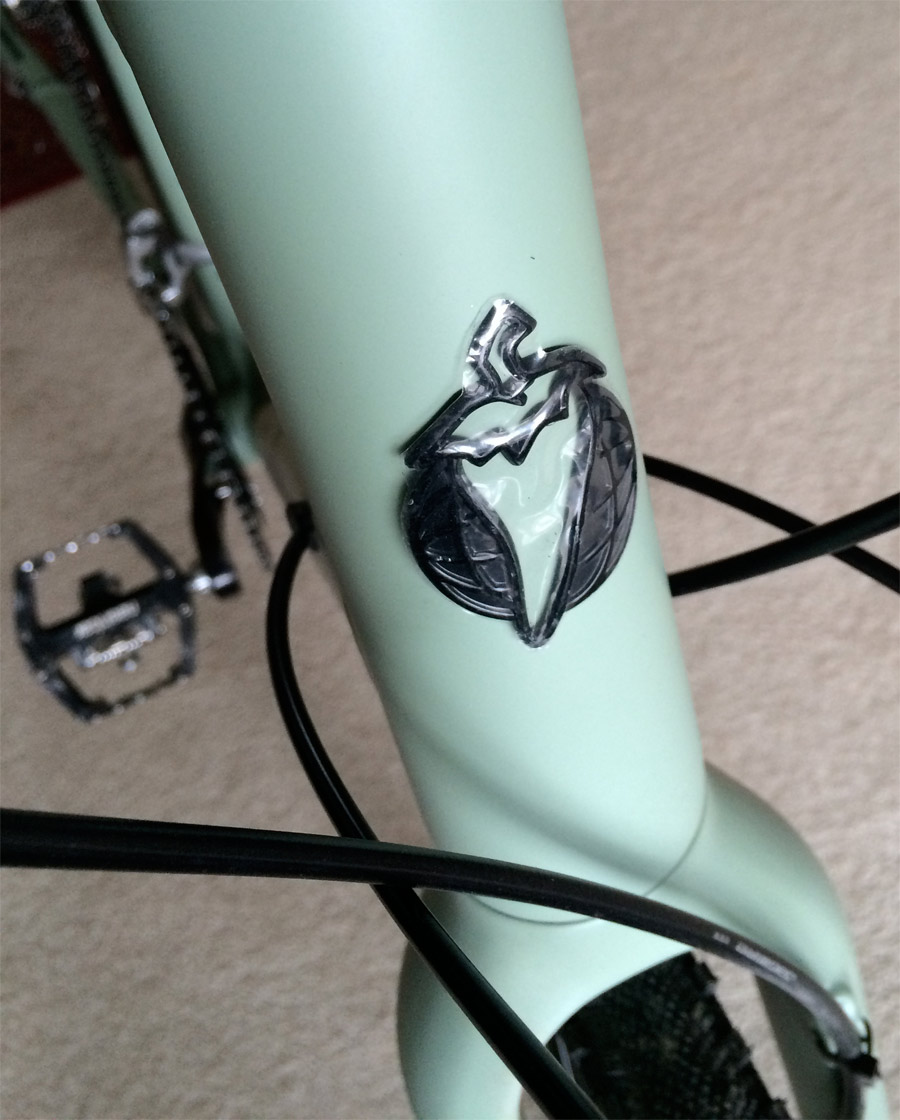
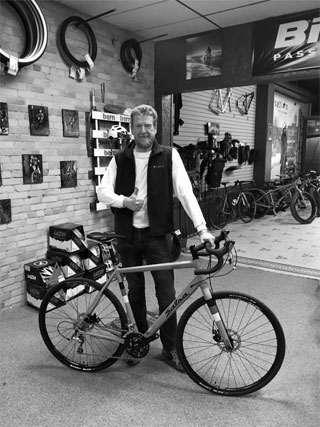
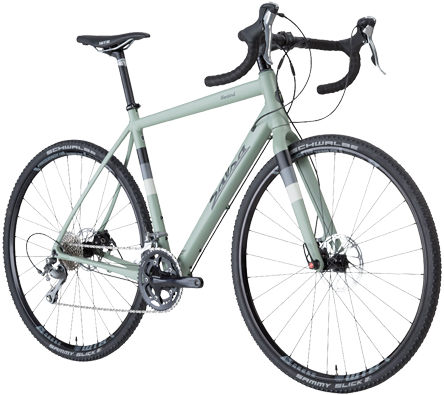
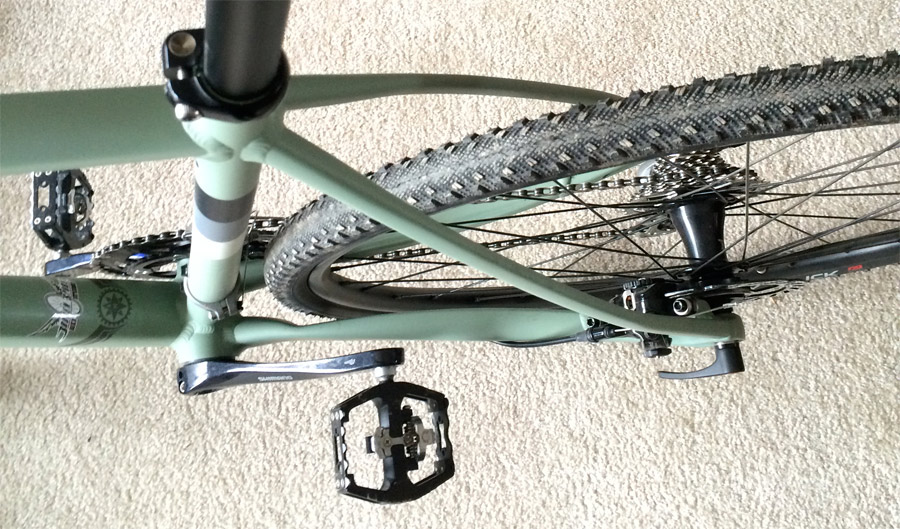
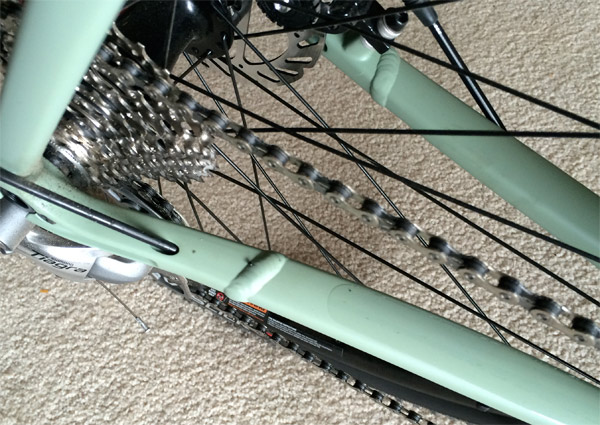
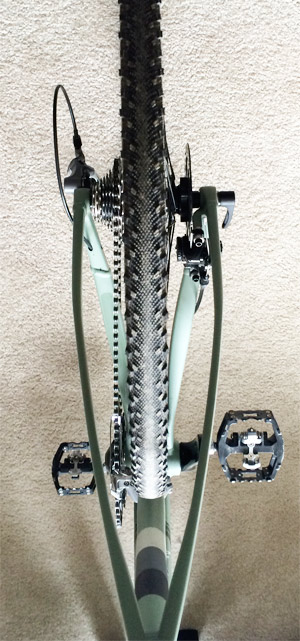
They really do flare outwards, don’t they!?
Now I have a small problem with this concept and it’s pretty obvious when you think about it. The logic and mechanics behind the bowed seatstay idea is quite obvious, Salsa are creating flex and compliance in a part of the frame where ordinarily there wouldn’t be any. But since we’re talking about a static suspension system, how does it deal with pre-loading?
Any active system will have adjustment to compensate for the variables, the variables being rider weight and the desired degree of travel. One could assume that the desired degree of travel on a gravel bike is something which could be fixed by the designer. I’m fine with that.
But what about the rider’s weight? Are we to assume that all riders of the Warbird are within a narrow range of body mass, say 150-160lbs? If so, what happens when a fat guy comes along and sticks an extra 60lbs into the equation?
- Alloy frame / carbon fork
- Tiagra Front and Rear – BB86, 34/46T Crankset with Tiagra RD-4601, 10-speed cassette
- SRAM DB BB7 front and rear brakes
- Schwalbe Sammy Slick 35mm tire with wire bead (Fit up to 42mm tires
- Class 5 VRS (Vibration Reduction System)
- Custom-butted, tapered seat tube
- Frame accepts 3 waterbottle cages. TIG-welded in for durability
| Frame | 2016 Warbird Aluminum |
|---|---|
| Wheelsize | 700c |
| Tire clearance | 700c x 42mm for frame; 700c x 44mm for fork |
| Fork | Salsa Warbird Carbon, 1-1/8 – 1-1/4″ tapered, 15×100 Thru-Axle |
| Headset-Upper | IS41/28.6 |
| Headset-Lower | IS47/33 |
| Seatpost | 27.2mm |
| Seat Collar | 32.0 mm |
| Front Derailleur | Bottom Pull, 34.9mm clamp |
| Bottom Bracket | PressFit BB86 |
| Crankset | 2x setup 39/53T Max. and CX1 setup 46T Max |
| Front Brake | 74mm Post, 140mm Rotor Minimum, 160mm Rotor Maximum |
| Rear Brake | 74mm Post, 140mm Rotor Minimum, 160mm Rotor Maximum |
| Front Spacing | 15x100mm Thru-Axle |
| Rear Spacing | 12x142mm Thru-Axle |
| Bottle Mounts | 3 |
| Derailleur Hanger | 687 Thru-Axle Part Number FS2339 |
| Cable Routing | Full Housing, Half Internal |
| Frame Weight | 1425g (51cm), 1500g (55cm), 1600g (56cm), 1570g (58cm), 1640g (60cm) |
| Fork Weight w/Uncut Steerer | 495g without thru-axle |
| Color | Army Green or Orange |
- Replaceable Derailleur Hanger – 687 Thru-Axle Part Number FS2339
- Clearance for 39/53T chainring set-ups
- Replaceable Derailleur Hanger
- Full carbon fork, tapered 1-1/8 to 1-1/4” steerer, thru-axle, 160mm disc brake rotor compatible
- Designed for lightweight, pedaling efficiency while gravel racing.
%
Alu Frame Increased Compliance Compared with Ti Frame
Then there’s the chainstays and the welded joint where one wouldn’t typically expect to find a welded joint. Rather than speculate, I decided to contact Salsa direct to see if they’d be willing to share some of the hoodoo behind this system.
Here’s the response I received from Andy Palmer at Salsa Cycles (via email):
The chainstay is actually a two piece design. The area after the weld is forged, and we use it on all sizes of bikes. This helps us with price. Forging also has the ability to make a part more intricate in order to save weight.The area in front of the weld is the main part of the chainstay. They are different for every size, and is what allows us to tune part of the ride and feel of the VRS system.
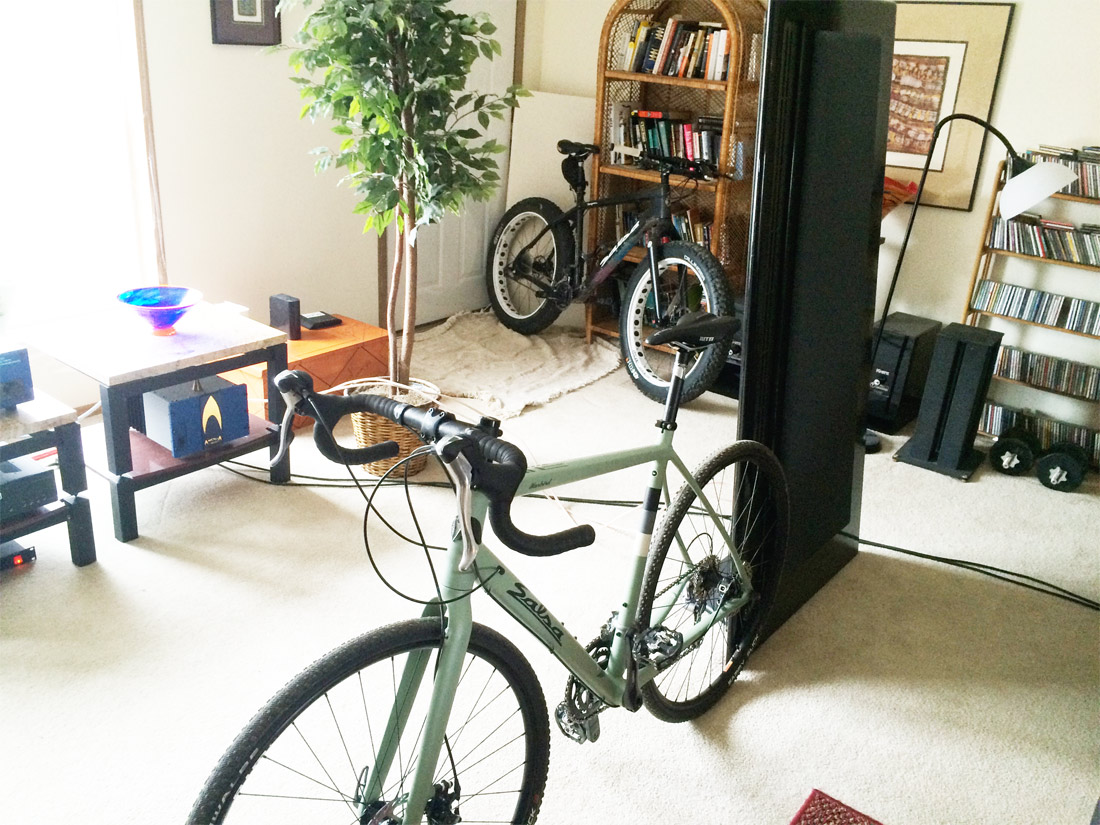
“The Man Cave”
So How Does The Salsa Warbird Ride?
Let's dispense with the waffle and ride this thing...It has been a while since I last rode anything that was remotely akin to a road bike. I’ve been riding a Hardtail 29er and my fat tire bike, the Salsa Beargrease, for the last year or so.
Back in October I spent a long and miserable day aboard a Trek Domane, tooling around the roads here in Door County WI. So it is to that bike that most of my immediate comparisons are drawn.
First off, when choosing a new bike one has a list of priorities and the task is finding a ride that checks off all of the main priority boxes. Some of the lesser requirements can be overlooked if the main priorities are covered.
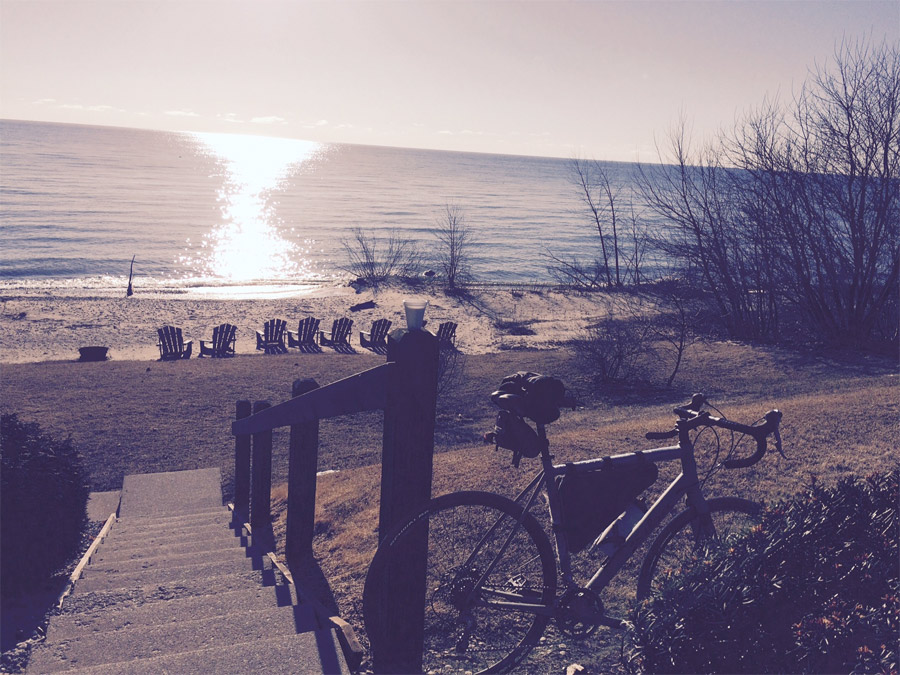
For me, at the top of the list of personal priorities is ride comfort. I’m quite tall, at 6′ 4″ and if I spend too much time too crouched over it hurts my lower back. So I need a fairly relaxed geometry. Also, I don’t appreciate a bone-shaking ride as that quickly becomes tiresome, particularly on longer distance rides as I’m prone to undertake.
So there’s rider comfort derived from geometry and there’s rider comfort derived from the bike’s ability to dispense with uneven and rough surfaces.
The Warbird scores 5 stars for ride comfort, both for its geo and for its ability to soak up the shocks.
The geometry for me is perfect. The hood position sits nicely and my hands land naturally at the top of the hoods with the seat in a central position, without me feeling too stretched out. Riding the lower drop position is actually quite comfortable too, I’m able to spend 15 – 20 minute intervals in the lower drops without feeling it in my old back.
So far so good.
Asphalt
The ride quality is simply amazing. I’m still riding the bike with the stock 35mm tires and mostly I have them inflated up around 70psi. That’s pretty high given the quality of roads in this area, yet the bike rides smooth as silk.
The forks take most of the sting out of the poor surface conditions and the VRS stops much of the broken surface rumble from hitting me in the seat.
Compared to the Trek Domane, the Warbird glides along like a Bentley Continental.
Dirt / Trail
Getting off the asphalt for the first time and hitting a dirt trail, I started to get a handle on what this bike is really about.
The transition from asphalt to rough trail is seamless. There’s no stopping to adjust tire pressures or change seat position or anything else. Just point the thing at the trail and ride! The carbon fork deals well with hitting smaller rocks and roots and you never feel that the bars are going to be torn from your grip.
The fork angle does give the bike a real responsive feel and you do need to exert a tight rein to stop the bike getting bounced sideways when going through the real rough stuff, but it’s just a case of getting used to the race-like handling and feel.
I really love the way this bike handles and the way it instills a sense of confidence in the rider. Of course it isn’t going to compete with a fat tire bike when going over the real rough stuff, particularly with the 35mm tires, but so long as you ride with some degree of common sense and a reasonable amount of caution, it won’t let you down or get you into trouble.
Gravel
I ride the Ahnapee State Trail regularly, and I’ve ridden it on several different bikes, including a couple of 29ers, a couple of different fat bikes and a 26″ MTB. It’s a tightly packed gravel trail which runs from Sturgeon Bay to Algoma WI, then off to Casco and Kewaunee – about 35 miles or so. The trail is an old freight line so it’s pretty flat and even, and I found myself easily hitting the highest gear on various sections of the trail, pumping away at 20+ mph.
Flat out there’s some chatter on the rougher stretches of gravel. I don’t quite know how best to describe it, chatter is the only term I can think of. The speed at which the chatter comes into play is higher than I’ve hit on any other bike on gravel, so I can’t be certain if it’s a function of this specific bike or just a consequence of riding fast over a gravel surface.
It occurred to me that the instigator might be the flared seatstays and the VRS system. I can’t believe that would be the case, but it has occurred to me so I thought I’d mention it here.

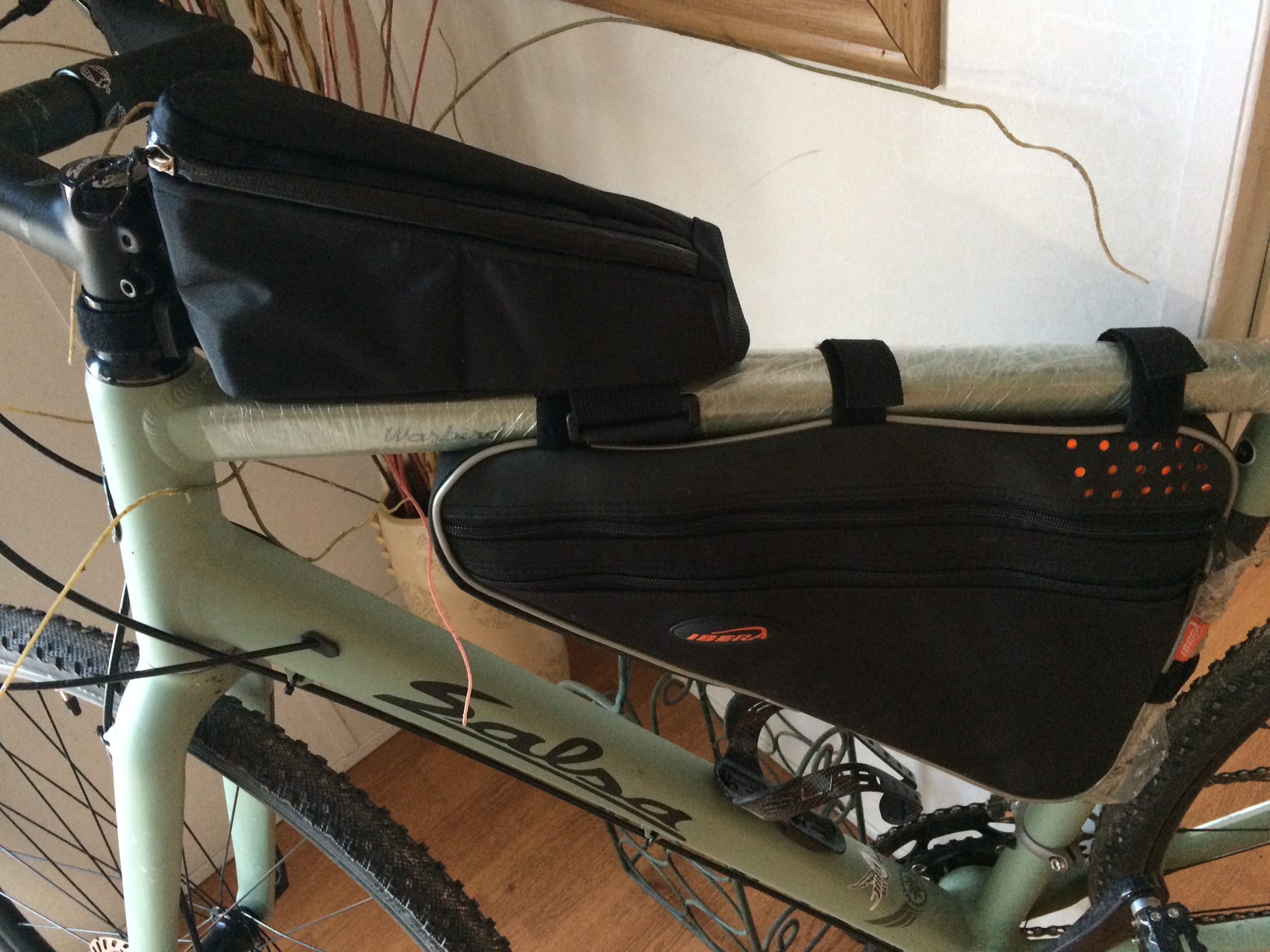
Bikepacking
I mentioned earlier in the review that no bike is perfect and there are bound to be some trade-offs. For me, the only real disappointment with the Salsa Warbird is the lack of braze-ons. I have various setup options for bikepacking, including pannier racks for my Ortlieb Back Roller Classics and various bags from Revelate designs [Viscacha, Sweetroll and Gastank Reviewed Here]. I also have a seatpost mount pannier rack that I can use at a pinch, but it does make me a little nervous about dropping the bike and having the bag go into the spokes.
So far I’ve kept my trips short and made them credit-card trips, so the Revelate Designs Sweetroll, Viscacha and Gas Tank, along with an Ibera Frame Pack have carried all the gear that I need.
[image shown without the Revelate Designs Viscacha mounted]
Under the moderate extra weight, around 20lbs, there’s really no noticeable difference to the way the bike handles or feels. I’m pretty confident that sticking another 20lbs into the mix wouldn’t change things too much either, but time will tell.
I may need to change the gearing on the Warbird if I plan to do any longer tours, more fully loaded. I do struggle with hills in the granny gear and find myself out of the saddle more often than is comfortable.
Conclusion
Over the course of the last six weeks or so I’ve logged over 500 miles on the bike with around 15-20% of those miles off-road.
The Warbird is light, agile, fast and extremely comfortable. Turning the screw on my old and knackered body I’ve hit a 18 mph average over 35 miles of mixed terrain in breezy conditions, so the bike doesn’t leave much behind when it comes to speed.
But the real acid test for me was my first century ride on the Warbird.
Riding from home I covered around 20 miles of asphalt before hitting the Ahnapee gravel trail. Eighteen or so quick miles on the trail brings me out to Algoma and back on asphalt. A 20 mile road ride to Potawotomi State Park then 10 miles tooling around on the internal park roads, some rough dirt trails and even some gnarly single-track (which was hard work with my tire choice and the 75psi !).
Leaving the Park, around 35 miles of asphalt takes me back home to Egg Harbor – 103 miles covered in 6:48 with a 15.1 average, not too shabby for an older dude. And it was very much a recreational ride, no hard-push, just riding around and admiring the scenery for the most part.
My comfort level throughout the ride was about as high as it could be. No numbness in the butt, no cramps, no lower back pain, no aching shoulders or neck. Sure my legs were stiff but that’s normal for me on anything over 50 miles.
So I believe I’ve found the right bike for my riding needs. It really is a versatile bike, I can take it pretty much anywhere and even get away with riding skinnies at road bike pressures on lighter dirt trails.
I’m looking forward to exploring more of what this bike can do in the coming months. Wider tires / lower pressures and a blast through the rocky sections at the local State Park; then some fully loaded touring to see how things work out with the extra weight. And more gravel trails, perhaps the Mountain Bay State Trail out to Wausau and back – close to 100 miles round-trip on nothing but dirt and gravel – the stuff of dreams.
FMB
May 1 2015

Sounds almost like the ideal bike for you, sans braze ons. I’m not too sure of those aluminum seatstays under heavy load, I just noticed this time there’s no cross bar at all between dropouts and seat tube. In my mind it seems bowing the seatstays in toward the seat tube would better counter lateral loading, how the GT Grade bikes are for instance.
It’s not a bleeping sprint bike though so it probably doesn’t matter in reality.
Thanks, yeah I feel really comfortable on the thing. I can’t believe how small it looks though, in the photo above from the bike shop! I was convinced I’d need a 60cm frame but the 58 felt so comfortable. It does look small though, in the photo!
I was wondering if you had any thoughts on the ‘chatter’ thing I mentioned? It’s a weird effect, like one hits a certain speed and it suddenly feels like riding fast over a washboard. Drop the pace a little (shift down one gear) and it disappears. Is this just a function of riding at 20+ on gravel, or something peculiar about this bike (perhaps the combination of the VRS and my weight?).
There is a very distinct “resonance” that can occur in materials at certain repetitive vibration speeds depending on construction. Just speculation but if you can consistently reproduce the effect, maybe without any bags attached and all the components are tight and the headset isn’t a tad loose, that might narrow it down. Does it still occur at the same speed with lower cadence (or higher), is it range-bound or applicable to any [maintainable for testing] speed above 20, if you free wheel down a hill does it immediately stop before getting back below 20? With rigid carbon forks I often get some fairly pronounced chatter when applying the brakes but can’t say I’ve ever experienced washboard effect without gravel washboards. If it’s very gravelly gravel, the bike tires will deflect off the sharp stones at a speed that feels almost like washboards but that shouldn’t depend solely on speed so much.
OK, all good points. At this stage I don’t have a broad enough range of experience and riding conditions under my belt to answer the questions you’ve raised, but I’ll continue to catalog the different conditions to see if a cause becomes apparent.
The trail only had short sections where I could get into the highest gear and hit a fairly high cadence, then I’d hit a marginal incline and have to shift down. But at maybe 60-65 rpm cadence, which isn’t quite my max, the effect would kick-in. And it seemed to kick in almost like throwing a switch, so the sympathetic resonance idea was what I had in mind too.
I’ll keep tracking it. I’m reluctant to raise issue with the LBS or Salsa at this point, because these types of issues do tend to follow me around 😉 When one looks for the common denominator in all of my problems it’s usually right there in the mirror when I’m shaving. lol
The gravel riding scene is getting very big. You are seeing more and more companies release gravel specific bikes. What you observed in Fat bikes is a very good comparison. Check out ridinggravel.com for the details.
The geometry for a gravel bike is ideally different from a cyclocross bike. Cyclocross bikes need a high bottom bracket for racing on dirt and limiting pedal strike like a mountain bike. Gravel bikes have lower bottom brackets which makes them a lot more stable on descents on a loose surface. It doesn’t sound like much but if you ever go down a steep gravel hill on a cyclocross bike it will definitely feel a lot more shaky and twitchy than even on a regular road bike. The bottom bracket drop on the Warbird isn’t especially low but combined with the long wheelbase, relaxed fork rake and wide tire you have a very comfortable bike that can go on all surfaces.
I have a Sala Colossal since I am just interested in staying on the roads, albeit crumbling and pot holed roads. It’s been wonderful and very comfortable over distances. That seems to be something that Salsa does very well across their whole line.
Thanks!
I hadn’t seen that link to the gravel bike website, I’ll check it out next.
The Colossal was on my radar for a while, but the crappy roads around here and my poor experience with the Trek Domane had me convinced that I needed something a lot more ‘forgiving’. I’m happy with the choice so far.
Thanks for the input on the BB/Geo.
This is only true for the most part about European cyclocross bikes but even there I’m uncertain how prevalent high and tight is; American cyclocross (mostly from China and Tiawan I guess) runs much more to the relaxed and stretched.
FMB, your review was just what I was looking for to further point me in the Warbird’s direction. I too was contemplating Vaya, Fargo, Warbird, and other brands “adventure,” “touring,” “all arounder.” You cemented the deal and I am going to order that bueno looking Teal model, probably frame only and custom build with a 1X. If you’ve experienced any problems, please give me a shout.
Hey Lawrence,
Glad the review helped.
No problems with the bike – a great ride and I think Salsa are a great company. The few dealings I’ve had with them direct have been professionally handled.
Good luck!
FMB, Thanks for the great review. Its nice to get the info from someone that can convey how this bike performs for a taller and heavier rider. Like you I am 6′ 4″ and have a 34″ inseam and weigh in at a lean 260. You indicated that you chose the 58 over the 60 so I was hoping to get a little more detail why you went with the shorter bike and possibly how your inseam and height were affected by the top tube and head tube length. Secondly do you know if there is a practical or specified weight limit for the VRS on an aluminum frame? At 260 I don’t want to end up sitting on the rear tire.
Hey Ron,
Sorry for the delay in responding to your question, I’ve been in the middle of moving house for the past couple weeks and it’s been a nightmare!
On the 58 v 60 choice – I think I’ve always tended to size down a little on most of my previous bikes (although I did move up to an XL on the fat bike). When I bought the Warbird I was expecting to need a 60, but the store only had one bike in stock that I could test-ride and it happened to be a 58. It felt great so I went ahead and ordered the same size. After a few hundred miles on the clock I never felt the need to lengthen the stem, switch to an angled seatpost or change anything about the setup. It felt comfortable. (I did wonder how a 60 might have ridden) The main thing I would have changed had I kept the bike was the gearing. The 2×10 setup didn’t go low enough and certainly wasn’t conducive to doing any touring. But otherwise it felt good.
On the weight question, I’m not aware of any limit for rider weight, and if there is one I can’t imagine you’re anywhere close to it. I was thinking the same thing about the VRS setup. I couldn’t understand how they’re basically using a suspension system but not making it adjustable for rider weight? But it seemed to work very well. I should say that my weight is down from when I started out riding 18 months or so ago, down by quite a lot. So I started out around 270+ but now I’m quite a bit under where you’re at, fully kitted out.
Cheers
FMB
Hey FMB, I’m another 6’4 34 inch inseam guy although but my weight is around 210. I like to hear you went with the 58. My question is about the height of the head tube. I read another review where he thought it was too short and had to add several spacers to get the right fit. Did you have to add spacers? I typically ride with my handlebar height pretty much even with my saddle height. How does that compare to your Warbird setup? I have a Specialized Roubaix and I test rode a 58 and a 60. The 60 felt like I was riding “in” the bike or sort of surrounded by it. When I tested the 58 it felt more like I was “on” the bike which felt a bit more natural for a road bike. Just wondering how the 58 feels to you. Thanks for a great review!
Just bought one at Red Bike in Edmonton, am dropping it on a trainer for the winter but can not wait to hit the River Valley trails and do some road riding in the next season. I am six feet and just under 200 lbs and this should be a ton of fun. I have a fewbikesbuthavenever had one in this class so am stoked to get out in some real world riding with it!